#BANTU
Explore tagged Tumblr posts
Text


" Tied the knot like a bantú, if I can then you can too "
#oyabuncongress#oyabun#beauty#classy women#melanin#black beauty#black girl magic#black panther#african art#african beauty#african queen#bantu#bantu knots#afro hair#melaninpoppin#melanin beauty#black history
666 notes
·
View notes
Text





Still think seer's snare is the best mode but this was pretty fun too.
23 notes
·
View notes
Text
Nyabinghi, or Nyabingi, was a legendary woman of the Bahororo Bantu tribe whose name meant "mother of abundance." She likely lived in the latter half of the 18th century. Following her death, Nyabinghi was mythologized as a spirit who moved among women in Ndorwa (Rwanda and Uganda), possessing them and leading them to rebel against illegitimate authorities, both from within and without.

(Illustration representing Queen Kitami, one of the women possessed by Nyabinghi)
29 notes
·
View notes
Text
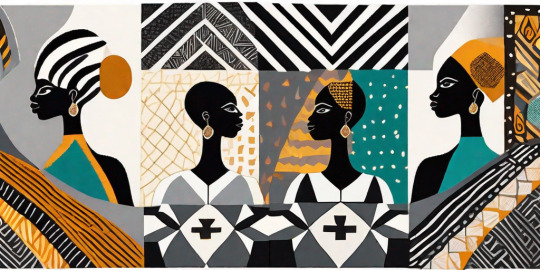
Bakongo spiritual protections influenced African American yard decorations. In Central Africa, Bantu-Kongo people decorated their yards and entrances to doorways with baskets and broken shiny items to protect from evil spirits and thieves.

This practice is the origin of the bottle tree in Hoodoo. Throughout the American South in African American neighborhoods, there are some houses that have bottle trees and baskets placed at entrances to doorways for spiritual protection against conjure and evil spirits.
In addition, nkisi culture influenced jar container magic. An African American man in North Carolina buried a jar under the steps with water and string in it for protection. If someone conjured him the string would turn into a snake. The man interviewed called it inkabera

#inkabera#nkisi#hoodoo#african american#african traditional religions#kongo#bantu#central africa#north carolina#bottles#african#afrakan#kemetic dreams#africans#brownskin#afrakans#african culture#afrakan spirituality#glass#dishware#wood#glassware#hearts
237 notes
·
View notes
Text
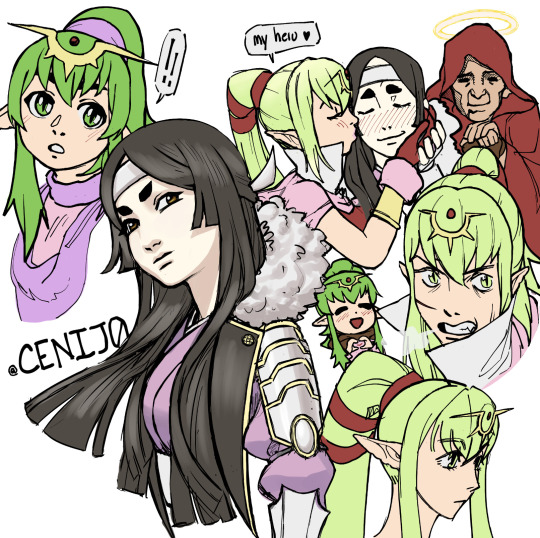

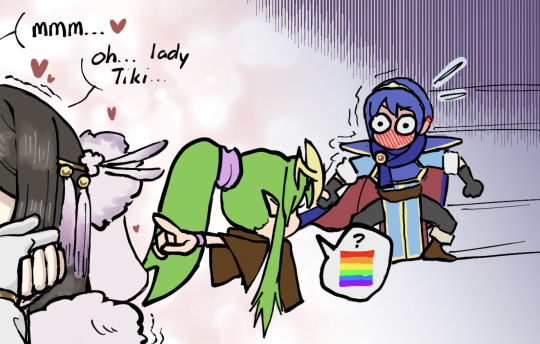
“I am used to loss. Do not deprive me from the joy of ever having.”
I hope my fellow Say’riki enjoyers have a good day! ❤️
#fire emblem#fe13#say’ri#tiki#tiki fire emblem#fire emblem awakening#say’riki#wlw#art#illustration#feh#fire emblem heroes#marth#young tiki#adult tiki#bantu
424 notes
·
View notes
Text
Q: what do you think about the art of tarot? does the art motivate you to buy it?














Hmm, speaking only for myself, it has, in the past, made me want to try it myself.
My first deck dealt with Syssk, an alien xenomorph who finds herself stranded in medieval Japan. Later I started on a new project featuring a female Cthulhu-like character (I never really did come up with a name for her) and it was only when I was about halfway through that I realized it was Syssk 2.0, the only real difference being the setting and costumes (Syssk crash lands on Earth in her UFO and, O look, Tentacles also just crash landed in a slightly different looking UFO, huh).
So, I’m trying something different. Instead of having a main character that runs through the story I started working with a pantheon of sea heroes and gods. There are mermaid tarot decks but there has yet to be an ocean-themed deck working with water deities from around the world.
For the wands I decided to focus on Egypt and West Africa. This is a rough draft, but one that has the burden of potential, as they say.
ACE: Mbumba, rainbow serpent of terrestrial waters. [Bantu] TWO: Abena Mansa, sea goddess associated with gold. [Akan] THREE: Erzulie, goddess of sweet water, beauty and love. [Dahomey] FOUR: Mamba Muntu, goddesses of the deep waters and female sexuality. [Bantu] FIVE: Nephthys, goddess of salt water, discoballs and the night. [Egyptian] SIX: Nommo, one of many primordial ancestral spirits that live in the sea [Dogon] SEVEN: Mami Wata, a water loa. [Ewe/ Fon] EIGHT: Yemoja, in rage over the Trans-Atlantic Slave Trade, is the orisha of sea waves and follows her people across the Atlantic. [Yoruba] NINE: Dahomey Amazon warrior weeping over her fallen comrades. [Benin] TEN: Pregnant Oya, orisha of sea storms. [Yoruba] PAGE: La Sirene and her shark [Côte d'Ivoire.] KNIGHT: Sobek, crocodile goddess of the Nile river. [Egyptian.] CONSORT: Unnamed. EMPRESS: Bosompo, primordial embodiment of the oceans and her pet squid, Lil’ Squiggle [Akan]
#tarot#conversations with imaginary sisters#my art#ocean-themed deck#water is life#Bantu#Egypt#Yoruba#Dogon#Akan#Ewe#Fon#Dahomey#wands
31 notes
·
View notes
Text

Komo wizard from Kisangani, modern-day Democratic Republic of the Congo
Belgian vintage postcard, mailed in 1954 to Brussels, Belgium
#postkaart#photo#postcard#modern-day#wizard#Kisangani#photography#postal#bantu#sepia#group#postkarte#Komo#briefkaart#vintage#carte postale#from#ansichtskarte#ephemera#Brussels#Belgian#ethnic#mailed#Belgium#historic#tarjeta
8 notes
·
View notes
Text

The Goddess of the Ilulange | Isiq
· · ─ ·𖥸· ─ · ·
This is a retelling of a story that nobody asked for. This is the story of the monster of Bantu and Zulu myth, the Isiququmadevu (aɪ-sī-ku-ku-ma-dī-vu), or as we shall come to know her, Isiq (aɪ-sīk).
The waters and mountainsides of the mythical Ilulange (ī-lu-la-ŭnj) River are where this monster resided. Today, we call its home Zambia, its territory likely spanning the river and ridges around Victoria Falls.
As legend has it, the beast was unlike any other. To the beings of the land, it was known by many names - Unomabunge 'Mother of Beetles', O’gaul’-iminga 'Feller of Lofty Thorn-trees', and O-nsiba-zimakqembe 'She Whose Feathers are Long and Broad'. It was both revered and feared in equal measure, a goddess of the land.
Accounts from some humans were not always as kind. From the nearby towns, it had gained its name, Isiququmadevu meaning Smelly Whiskers. They described it as a bloated, bald, squatting, and bearded monster the size of a wagon with the body of a giant lizard. Stories claim it was a voracious beast, one capable of swallowing a whole town within a day.
But, it is time we heard the true story of the beast of the Ilulange. It is time we heard the story of Isiq. The truth, however, is always hidden within history, so we must go back to one of Isiqs most known fables, 'Untombinde and the Squatting Monster'.
Untombinde (n-to-m-bɑɪ-n-d) was a chiefs daughter, a princess. According to legend, Untombinde traveled with 200 handmaidens to the Ilulange in spite of the warnings from her parents and others. She had done so to prepare for her wedding, choosing to cleanse herself in the waters of the dangerous river. She arrived safely and enjoyed a swim with her procession. But, when her handmaidens went to collect their belongings from the riverbank, they found that the Isiququmadevu had taken everything of value.
While the handmaidens pleaded readily to the Isiququmadevu for their jewelry and clothes, Untombinde remained defiant as her noble blood dictated; the princess refused to bow before the beast.
Enraged by her disrespect, the Isiququmadevu devoured Untombinde on the spot. Her handmaidens returned to the chief and informed him of his daughters disappearance.
The rest of the story is short.
The chief sent an army out to hunt the Isiququmadevu, but they were quickly eaten. Not only were they eaten, but the entire town was as well - some stories inflating the count to the entire country. Yes, the Isiququmadevu took its retaliation out on the people and spared no one.
A man, father to two of its victims, was the only person who managed to escape. This man then sought out the Isiququmadevu on his own, and after a long journey, was able to find and subdue it. He ripped open its belly, allowing all of the townspeople and even Princess Untombinde to spill from its guts.
This is seen as a story of perseverance and triumph. But, there is more to it than meets the eye. What you have unknowingly read is a romantic tragedy, one that speaks of a goddess turned monster and a forbidden love.
Let us go back then to the start. Let us see the monster, Isiq, through the eyes of Princess Untombinde.
...to be continued

🅾 Insta | ✎ᝰ DeviantArt | ʚĭɞ Bluesky
#isiququmadevu#african folklore#zulu#bantu#mythology and folklore#digital art#monster art#monster woman#african#terato#monster lover#monster fucker#short story
8 notes
·
View notes
Text
Untranslatable words (part 3)
Here are part 1 and part 2. I have also made other posts with untranslatable words in Spanish and German.
Arabic: غرفة [ḡurfa] (the amount of water that can be held in one hand), يقبرن [yaqbirna] (literally “may you bury me”, wishing that a loved one outlives you because of how unbearable life would be without them)
Bantu: mbuki-mvuki (to shed one’s clothing spontaneously and dance naked in celebration)
Dutch: gezellig (cozy, nice, pleasant, sociable), struisvogelpolitiek (literally “ostrich politics”, an evasive style of politics that fails to address problems by either ignoring them or by creating a false sense of security through ineffective measures)
Finnish: poronkusema (the distance a reindeer can comfortably travel before taking a break, around 7.5 kilometers/4.7 miles)
French: feuillemorte (of the color of a faded, dying leaf), l’appel du vide (literally “the call of the void”, the inexplicable draw of the dangerous and unknown future), noceur (someone who goes to sleep late or not at all or one who stays out late to party)
German: Drachenfutter (literally “dragon fodder”, the gift a husband gives a wife when he is trying to make up for bad behaviour), Kabelsalat (literally “cable salat”, cable clutter)
Greek: μεράκι (intense passion)
Hungarian: szimpatikus (nice, likeable)
Japanese: ぼけっと [boketto] (gazing vacantly into the distance without thinking about anything), 風物詩 [fūbutsushi] (the things that evoke memories of a particular season)
Hawaiian: ʻakihi (listening to directions and then walking off and promptly forgetting them)
Hindi: जुगाड़ (jugāṛ) (a process or technique that lessens disorder in one’s life, making it easier to manage or more convenient)
Icelandic: tíma (not being ready to spend time or money on a specific thing despite being able to afford it)
Indonesian: jayus (a joke so terrible and unfunny it can’t help but make you laugh)
Inuktitut: ᐃᒃᑦᓱᐊᕐᐳᒃ [iktsuarpok] (the act of repeatedly going outside to check if someone is coming)
Italian: commuòvere (to move in a heartwarming way)
Malay: pisan zapra (the time needed to eat a banana)
Norwegian: forelsket (the indescribable feeling of euphoria experienced as one begins to fall in love)
Portuguese: nefelibata (literally “cloud-walker”, one who lives in the clouds of their own imagination or dreams or does not obey the conventions of society), saudade (a vague, constant desire for something that does not and probably cannot exist, a nostalgic longing for someone or something loved and then lost)
Russian: разлюбить (razliubit) (to fall out of love)
Sanskrit: कल्प [kalpa] (the passing of time on a grand cosmological scale)
Scottish Gaelic: sgrìob (the peculiar itchiness that settles on the upper lip before taking a sip of whiskey)
Spanish: cotisuelto (someone who insists on wearing their shirt tails untucked)
Swedish: mångata (the roadlike reflection of the moon on the water), smultronställe (literally “place of wild strawberries”, a special place treasured for solace and relaxation, free from stress or sadness), tretår (on its own, “tår” means a cup of coffee and “patår” is the refill of said coffee, so a “tretår” is therefore a second refill)
Tagalog: kilig (to experience shivers and suffer pangs from strong emotions, usually romantically)
Ursu: گویا [goyā] (a transporting suspension of disbelief, an “as-if” that feels like reality), ناز [nāz] (the pride and assurance that comes from knowing one is loved unconditionally)
Wagiman: murr-ma (the act of searching for something in the water with only one’s feet)
Welsh: glas wen (literally “blue smile”, one that is sarcastic or mocking), hiraeth (homesickness, nostalgia, a longing for somewhere one cannot or will not return to)
Yiddish: לופֿטמענטש [luftmentsh] (literally “air person”, someone who is a bit of a dreamer)
#langblr#arabic#bantu#dutch#finnish#french#german#greek#hungarian#japanese#hawaiian#hindi#icelandic#indonesian#inuktitut#italian#malay#norwegian#portuguese#russian#sanskrit#scottish gaelic#spanish#swedish#tagalog#ursu#wagiman#welsh#yiddish
161 notes
·
View notes
Text
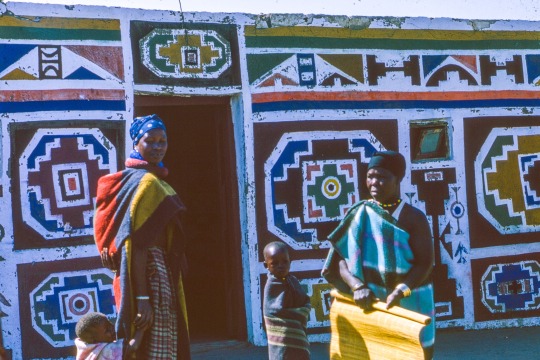
#1964#1960s#women#africa#bantu#people#kodachrome#found photo#bantu people#vernacular photography#vintage#found slide#kodak film#old photo#old photography#vintage photography#found photography#vintage photos#kodak#old photos
34 notes
·
View notes
Text
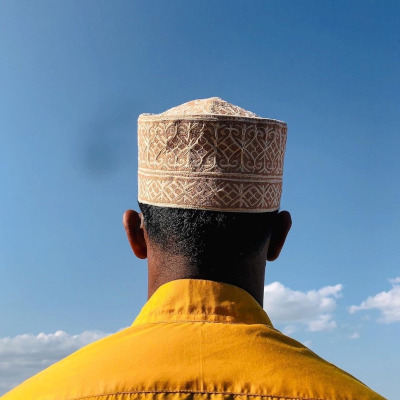
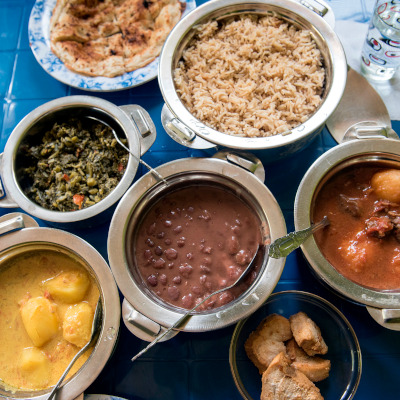
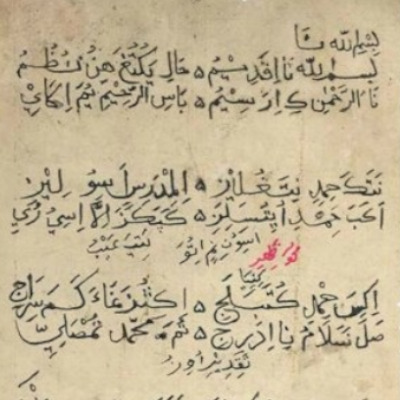
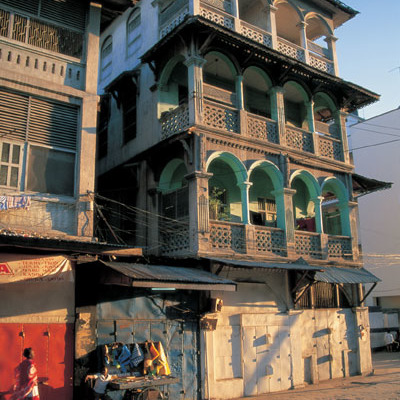


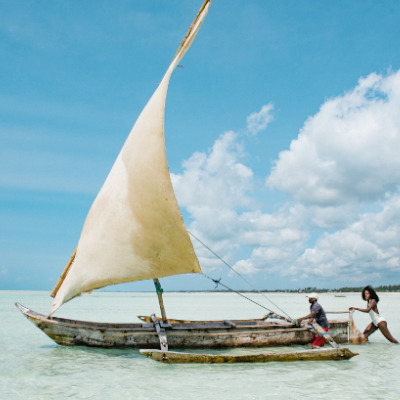
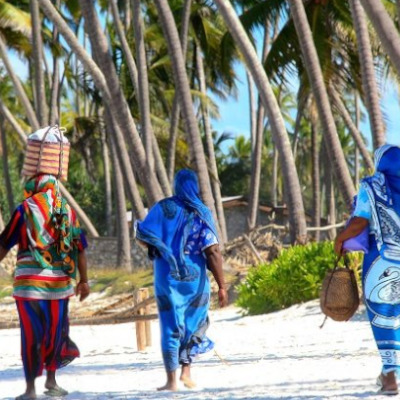

Aesthetic of the languages on earth : Swahili
Swahili is a Bantu language spoken by 80 million people over the African East Coast. It is an official language in Tanzania, Kenya, Rwanda and Uganda. It is a recognized minority language in Burundi, the Democratic Republic of the Congo, and Mozambique.
#swahili#aesthetic#languages#moodboard#language#geography#bantu#tanzania#africa#kenya#rwanda#uganda#burundi#drc#mozambique#atlanticcongo
81 notes
·
View notes
Text

Proto-Bantu Farmer
This is another sketchbook doodle that I chose to color in digitally. The subject is a farmer lady representing the Proto-Bantu people, a subgroup of Niger-Congo speakers who would have lived in what is now Cameroon between 4500 and 4000 BC. Around 1000 BC, they would have expanded from that location across much of central and southern Africa, bringing agriculture and iron-working technology and diversifying into the various Bantu ethnic groups that dominate those regions of the continent to the present day.
8 notes
·
View notes
Text
Tales of Kenzera: ZAU is out now.
Inspired by Bantu mythology and folklore.
21 notes
·
View notes
Text
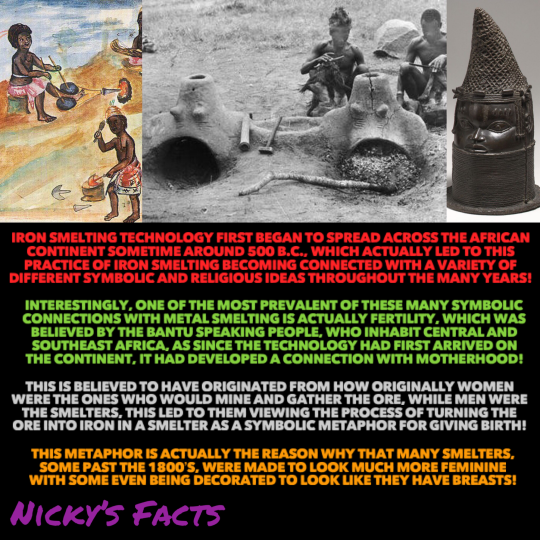
The feminine urge to mine and smelt iron ore!🪨
🔥🛠🔥
#history#iron#smelting#fertility#bantu#african history#ancient#femininty#motherhood#africa#technology#womens history#symbolism#black femininity#african culture#iron works#ancient history#girl power#mining#african women#traditional femininity#iron ore#precolonial africa#nickys facts
11 notes
·
View notes
Text


Sit down, son!
I'm not going to say this is practical or anything but, i got Bantu to tank and kill Ike on the Abyssal map! Grandpa's still got it!


My Bantu + small emotional support dragon. I could definitely update his kit some more but it's more funny that i didn't.
11 notes
·
View notes
